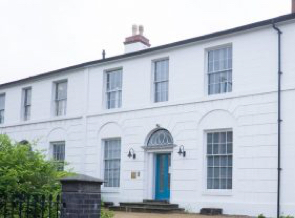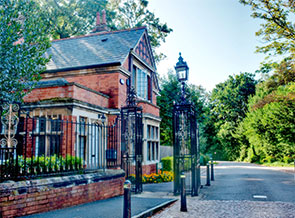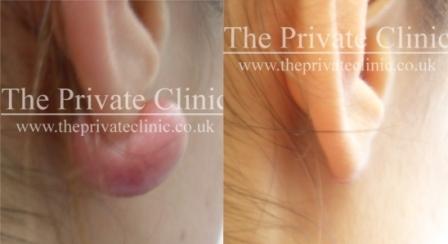
- Keloid Scar Removal with bespoke treatment plans
- Improve the appearance of prominent scars
- Boost confidence and self-esteem
What’s on this page
- About this Treatment
- Before & After Photos
- What to Expect
- FAQs
- Our Clinics
- Why the Private Clinic
- Meet the Experts
- Related Blogs & News
Medically reviewed by Lorcan Sheppard BSc MBBS FRCA, Chief Medical Officer for The Private Clinic of Harley Street, London.
Last Reviewed June 10th 2024
Related Treatments
Keloid Scar Removal
Keloids are highly visible, exaggerated scars that are particularly common in darker skin. They can develop after surgery, after major skin trauma, or even after very minor skin damage like acne scars.
Keloid scars are frequently difficult to treat and can be a source of embarrassment, especially in visible areas. At The Private Clinic, we appreciate the psychological impact this can have and have extensive experience in treating patients who suffer with troublesome keloid scarring. We provide patients with a range of Keloid Scar Treatments with our expert Consultant Plastic Surgeons.
What are Keloid Scars?
Keloids have a shiny and hairless appearance with a hard or rubbery feel. Keloid scars tend to be larger than the original wound. They usually occur on the upper chest and shoulders – particularly over the breastbone – and on the earlobes. They can also occur in the beard area and on the scalp.
They are not dangerous, but they can be itchy and tender or even painful to touch. The emotional impact of keloid scars, however, is often greater than the physical one as they can cause great distress, particularly in younger patients, and can seriously undermine self-confidence.
Keloid Scars Facts
- Dark skinned people are more susceptible to keloids than those with paler skin
- Wounds that are under pressure or get infected while healing are especially likely to develop into keloids as are burn and acne scars
- Keloids are most likely to develop between the ages of 10 and 30
- They are not caught from anyone else
- They carry no risk of cancer
- The tendency to scar in this way can run in families
What causes Keloid Scars?
Keloid scars occur when there is too much collagen in the skin. They usually develop after any sort of injury or damage to the skin such as a cut/wound, scratch, burn, surgical incision, vaccination sites, chickenpox, acne or a body piercing.
Keloids also tend to have a genetic component, which means you’re more at risk of developing keloids if one or both of your parents have them.
Keloid Scar Treatment
There is no treatment for keloid scars, but treatments are available to help improve the appearance of keloid scars. These include
- Steroid Injections
- Silicone Dressings
- Cryotherapy
- Laser Therapy
- Surgical Excision
Keloid Scar Removal Before & After Photos
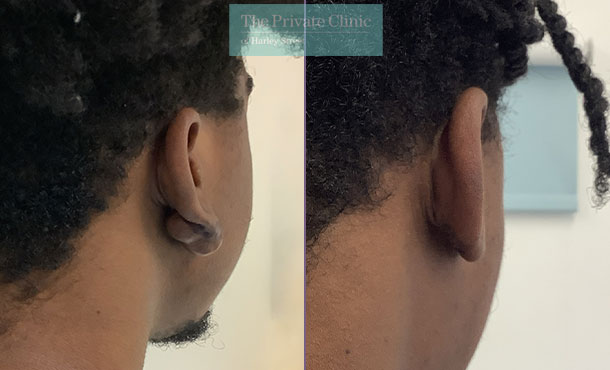
Keloid Scar Removal
Surgical Excision
After: 9 Weeks
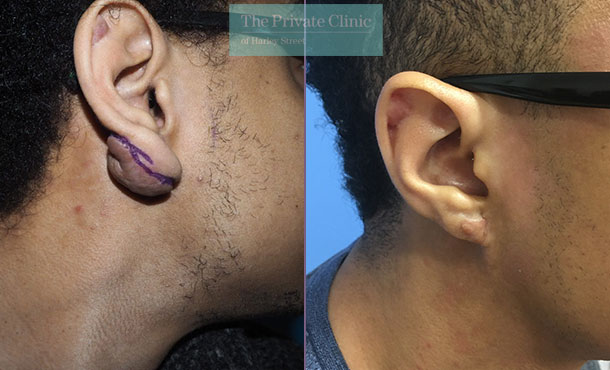
Keloid Scar Removal
Surgical Excision
After: 6 Weeks
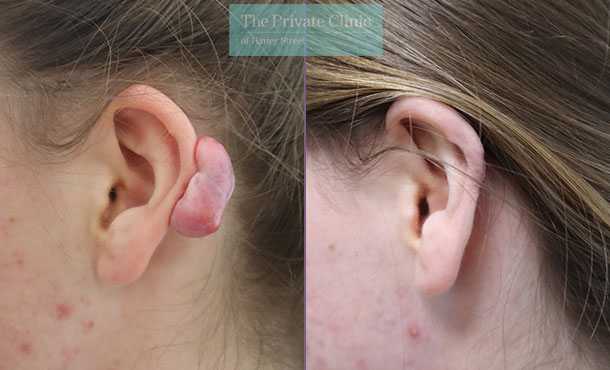
Keloid Scar Removal
Surgical Excision
After: 4 Months
What to Expect
The Private Clinic has been treating patients for over 40 years with thousands of people placing their trust in us each year. We pride ourselves on being able to offer a personalised service. We have a team of friendly nurses and expert surgeons who understand the importance of this decision and will support you throughout your journey with us.
Keloid Scar Removal Consultation
Your Keloid Removal journey will begin with a consultation with one of our expert surgeons who specialise in keloid scar management.
At your consultation, your surgeon will give a comprehensive assessment which includes an evaluation of the scar.
This will allow your surgeon to assess which techniques would be suitable for your keloid scar. Successful treatment of keloid scars relies on a well thought through strategy.
Your surgeon will discuss:
- Your medical history
- Your expectations from surgery
- Risks and Complications of keloid treatment
- Pros and Cons of each treatment
- Aftercare advice
Following your consultation, you will be introduced to your dedicated patient coordinator who will be your point of contact should you wish to proceed with keloid treatment.

Pre-Operative Appointment
In the interests of patient safety, all our patients are assessed against our patient selection criteria. If choosing surgical excision, your medical history will be reviewed and the pre-operative nurse will advise on any pre-operative tests.
They will advise you of any precautions you need to take in the days or weeks leading up to your surgery and advise on any medication that you should stop taking before your procedure.

Keloid Scar Removal Treatment
We offer a range of treatments for Keloids. The type of treatment will depend on the size of the scar.
Steroid Injections
Corticosteroid injections are frequently used to prevent and treat raised scars, like keloids and hypertrophic scars and are normally the first-line option.
The corticosteroids break the bonds between collagen fibres, reducing the amount of scar tissue beneath the skin. It also works to suppress scar inflammation, which can help reduce pain or itchiness. Treatment aims to soften and flatten the scars to reduce their appearance.
The steroids are injected directly into the scar. A course of treatment is usually recommended for the best results.
Surgical Excision
Surgical excision involves cutting the keloid to help reduce the size and bulk in the area of keloid scarring. In most instances, a course of steroid injections is recommended before and following this procedure to help achieve the best results.
The rate of return for keloid scarring after surgery can be high. However, the benefits of removing a large keloid often outweighs the risks of scarring post-surgery.

After Your Keloid Scar Removal Treatment
There is no downtime following Steroid Injection treatment and patients will be able to return to their usual activities immediately.
After undergoing keloid removal surgery, your surgeon will provide you with aftercare instructions. Due to the nature of keloids, you must follow these to help achieve successful outcomes.
You may be recommended to have a course of steroid injections following treatment. If the keloid was on the earlobe, a pressure clip may also be recommended to reduce the chance of recurrence.
Exercise and strenuous activities should be avoided for at least 2 weeks as these may cause inflammation or irritation and increase the risk of infection.
You should protect the area treated from direct sunlight to reduce the risk of hyperpigmentation
A follow-up appointment will be booked with your surgeon at 6 weeks to assess how the area is healing and wether further treatment is required.
Whilst keloid treatments will not be able to airbrush the keloid away, they can help trade a noticeable keloid scar for a better quality scar. The scar following treatment should flatten, making it much less noticeable.

The Private Clinic have collaborated with Chrysalis Finance to offer 0% finance for our patients.*
*Acceptance is subject to status. Terms and conditions apply.
Frequently Asked Questions
Injections of the steroid (triamcinolone) are the most effective way of treating most Keloid scars, though this will depend on the size and location of the scar.
After 4 to 6 sessions of this treatment, the appearance of Keloids will have improved dramatically.
If the scar is particularly large, it can be reduced in size with surgery. This will then be followed up with a series of postoperative steroid injections.
Steroid treatment for Keloid scars takes between 15 and 30 minutes per session.
Surgical removal of Keloids can take up to 1 hour depending on size.
Keloid scar treatment often requires a combination of different treatments that take place over weeks or months.
A consultation is always your first step, where you can obtain a full understanding of the severity of your scarring and your treatment options.
Everyone’s keloid scar reduction treatment is going to be different so providing a guaranteed cost for treatment is difficult. Our experts work with patients to ensure they are receiving the best possible treatment for their scar with reduced risk of recurrence where possible. You can rest assured that you are in the greatest of hands.
Prices for Keloid Scar Steroid Injection treatment start from £330.
Surgical removal of Keloids starts at £1,150.
Keloid treatment with steroid injections should see an improvement in the appearance of your scars within two to three weeks of your first treatment. A course of treatment is required for the best results.
Surgical excision of keloid scars provides an instant result but it is advised to wait 6 weeks before the area is fully healed. Steroid injections during the recovery process are recommended to help assist with healing to help achieve a good result.
Keloid reccurance following surgical removal is not uncommon which is why our experienced surgeons will work with you to establish the best course of treatment for you.
To reduce the risk of a keloid returning after surgical removal, most patients are recommended to have another treatment after surgery such as steroid injections.
It’s important to understand that keloid scar treatment is more of a scar revision procedure that involves swapping the original scar for a better quality and less noticeable scar.
keloid scar removal is Available in these Clinics
Why Choose The Private Clinic
- xpert Consultant Surgeons with years of experience in keloid scarring.
- State of the art medical facilities, all registered by the CQC (Care Quality Commission).
- We have managed to achieve excellent results with low rates of recurrence through our innovative treatment approach.
- Realistic expectations are paramount to us and we always provide honest advice on what to expect following treatment.
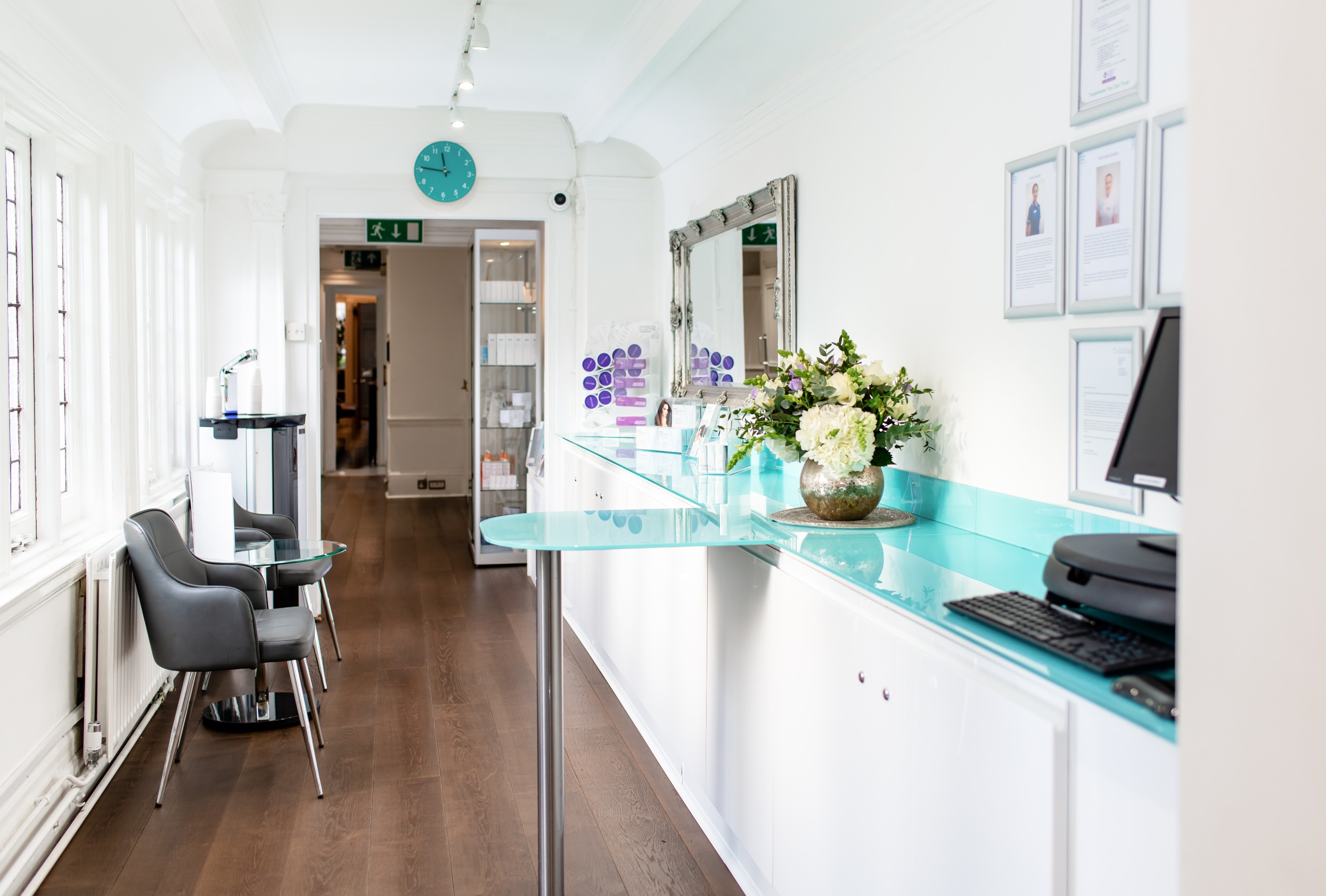
Meet our Medical Experts
Our team consists of some of the UK’s best Cosmetic Dermatologist in London and Doctors providing a range of minimally invasive treatments for Keloid Scars. We are one of the UK’s leading best dermatology clinics in London, as well as one of the very few clinics in the UK able to assess and treat Keloids. At your Harley street dermatology clinic consultation, we will carefully examine your scar and outline the treatment options available to you. If you choose to go ahead we will perform the procedure in our own theatre facilities.
- NHS – Keloid Scars
- Healthline – Everything You Need to Know About Keloid Scars
- National Institutes of Health – Keloid – StatPearls – McGinty S, Siddiqui WJ. Keloid. [Updated 2023 Jul 17]. In: StatPearls [Internet]. Treasure Island (FL): StatPearls Publishing; 2024 Jan-.
- British Association of Aesthetic Plastic Surgeons (BAAPS) – Scars and Keloids






